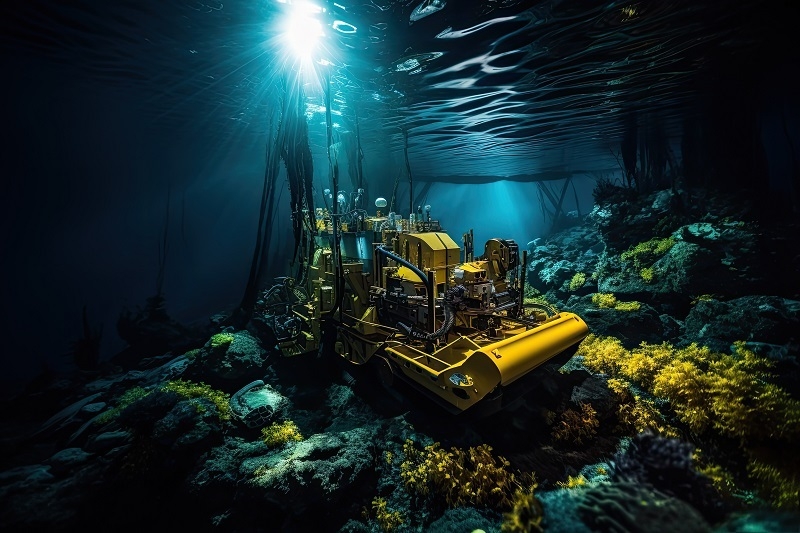Deep-sea Mining: Why it istime to sink this ship
22 Sep 2024 10:24:32

■ By M Rajshekhar :
THIS July, a scientific paper in ‘Nature’ magazine
‘Evidence of dark oxygen production at the abyssal
seafloor’ announced an extraordinary discovery. It
said, metallic lumps have been splitting seawater to produce oxygen on the sea-bed of the Pacific Ocean’s ClarionClipperton Zone, 13,000 feet below the sea’s surface, far beyond
the reaches of sunlight.
The paper has challenged two notions -- that photosynthesis first by tiny micro-organisms known as the archaeans
and then by plants and trees produced oxygen in the Earth’s
atmosphere, and that a part of this oxygen diffused into
oceans’ surface waters sank down all the way to the sea-bed
supporting life there. Its authors found higher oxygen levels -- not lower -- closer to the seabed. Lab tests revealed
neither the micro-organisms nor geological or environmental factors were at play. Instead, oxygen was being produced by the lumps or polymetallic nodules.
It is conjectured that these nodules get charged as they
grow, depositing different metals like manganese and cobalt
irregularly over time.
This creates a gradient in charge
between each layer resulting in electrical potential that splits
seawater to oxygen.
The world in the throes of renewables revolution needs
critical minerals like lithium, cobalt and manganese. China
controls most on-shore reserves of these minerals. So, deep
sea mining for critical minerals to pluck these polymetallic
nodules from the seabed has been doing the rounds. A
clutch of countries and companies arevying to harvest these
nodules. The critics of deep sea mining claim that the firms
might strip-mine seabeds, disturbing seafloor sediments,
killing the species and the poorly understood ecosystems
living in or on that layer of soil, with poorly understood fallouts for marine food webs, while potentially releasing the
carbon stored in ocean sediments.
The paper in
‘Nature’ challenged the
a s s u m p t i o n
that polymetallic nodules are inert
rocks lying on
the seabed. It
said that they
performed a
core ecological
function on
the seabed.
This raises scientific and ecological questions about the origins of life on Earth, deep sea ecosystems supported by the
nodules. Given the new discovery, should these nodules be
mined, is another question.
(Read full story at
https://carboncopy.info/deep-sea-mining-why-it-is-time-to-sink-this-ship/#:~:text=Seabeds%20will%20get%20damaged%20as,has%20disputed%20the%20Nature%20paper.)
Curated by Kartik Lokhande
